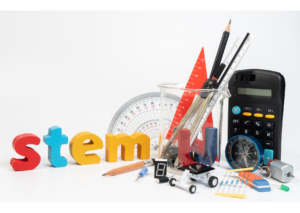STEM for Home: Activities and Projects

Science, technology, engineering, and math are the four STEM subjects. It’s become really popular to talk about STEM and how important learning about STEM is because knowing about these subjects can help you to better understand the world and be able to get a good job someday.
Just about everything you do, in school and when you’re an adult, will have something to do with at least one of the four STEM topics, whether you’re doing your math homework, trying to become the star pitcher of a baseball or softball team, or playing video games with your friends.
It’s also really important to understand STEM because a lot of good careers can be found in these fields. People who create new medicines, build fun apps, design bridges, and send astronauts into space all rely on what they know about these subjects.
Paying attention and working hard in school can help you to learn a lot about STEM, but you can also do fun activities at home that can teach you about these topics. STEM is all about paying attention to the world around you, learning about what you see, and solving problems using what you know.
Sometimes, learning about STEM is like doing puzzles. It can be fun to come up with different ways to solve a problem or answer a question, test out your ideas, and see which solution is best. These skills can also help you to make better decisions in your daily life.
Science
Science, the “S” in STEM, is a topic that can be a lot of fun to learn about; sometimes, it even gets messy or explosive! By thinking about a question, coming up with a possible answer (called a hypothesis), and testing out your ideas by doing experiments, you can learn about the world around you.
There are many great ways to learn about a wide variety of science topics online, from how planes fly through the air to how weather works. The science element of STEM includes things like biology, physics, chemistry, and astronomy.
Scientists might focus on things like curing diseases, protecting animals, predicting hurricanes, or even helping the police to solve crimes. Science can save people’s lives, and it can also save the lives of the many types of plants and animals that live on Earth.
Technology
Technology, the “T” in STEM, is all around us every day. It includes just about anything that uses electricity, though most people think of computers when they think of technology. Computers definitely play a big part in this area of study, and there are a lot of jobs that use technology.
You could use machine learning to make computer programs smarter, learn to write code and create your own software, or even make video games. Even if you don’t want to be a computer programmer someday, though, you’re likely to need to use technology in whatever you do. Almost all jobs use technology in some way.
Engineering
Engineering, the “E” in STEM, is what people do when they need to create something to solve a problem. There are lots of different types of engineers, but even if you don’t want to be an engineer when you grow up, it can still be useful and even fun to learn about.
There are lots of engineering games online, and you can also get creative by trying to solve a problem or challenge in different ways.
Math
Math, the “M” in STEM, is useful in all areas of life. Understanding math is important if you want to do well in school, of course, but it’s also something you’ll use all the time when you’re older, whether you’re making a budget so your paycheck will last until the next time you get paid or just trying to figure out how much something that’s marked “20% off” will cost.
Math is also used in all other areas of STEM: You can’t study science, technology, or engineering without a strong understanding of math. By building your math skills now at home, you’ll be setting yourself up to succeed later in life.
